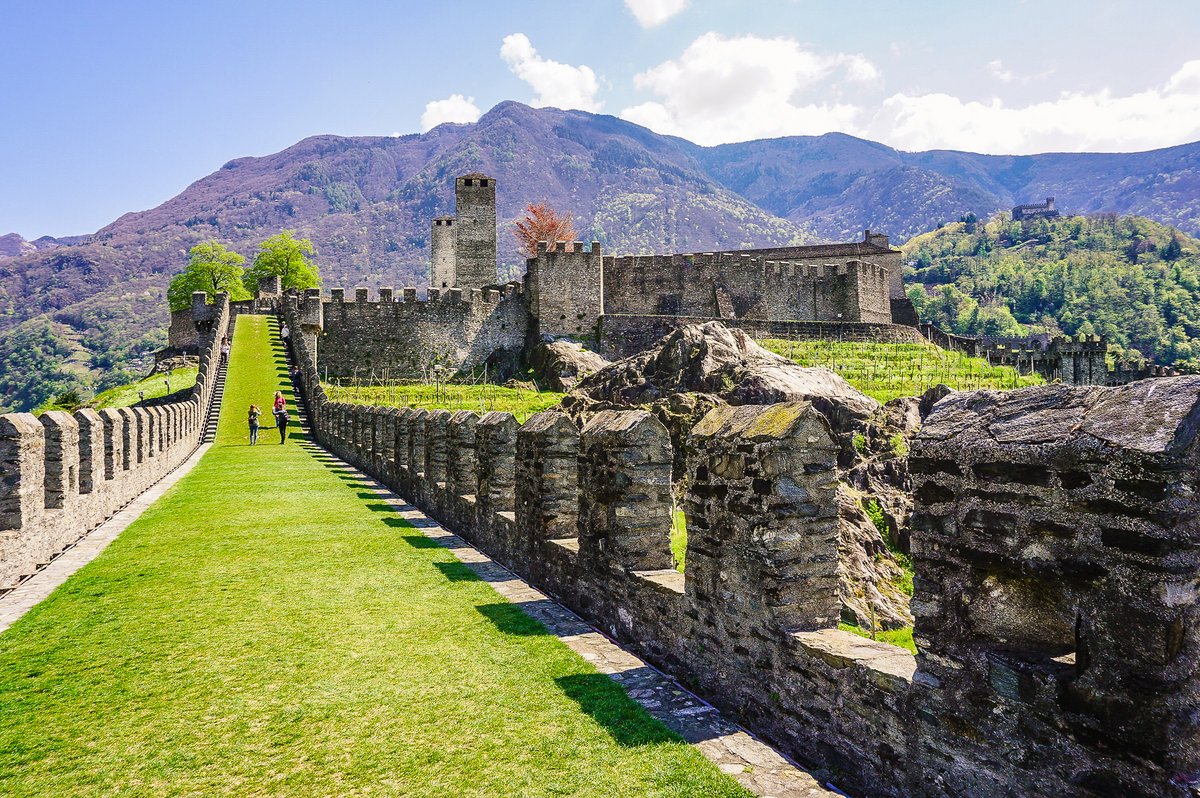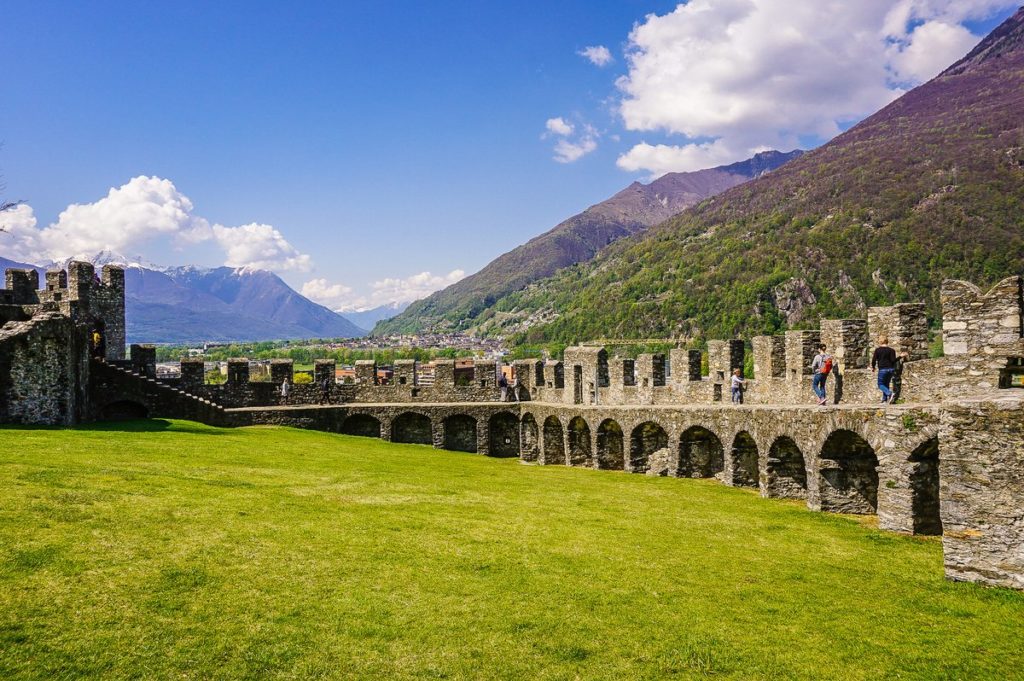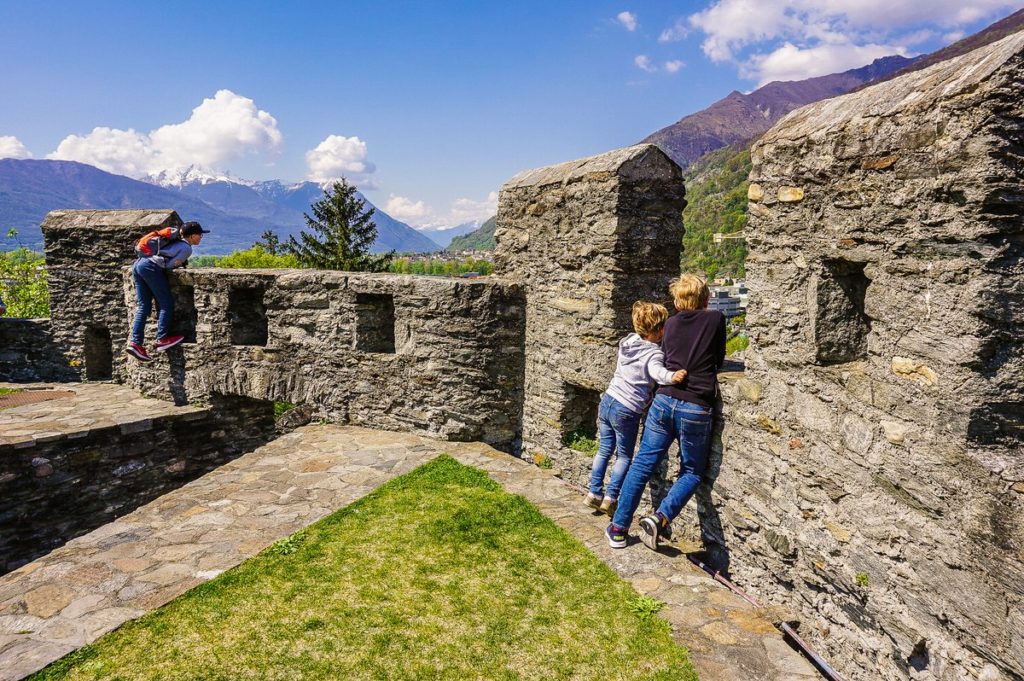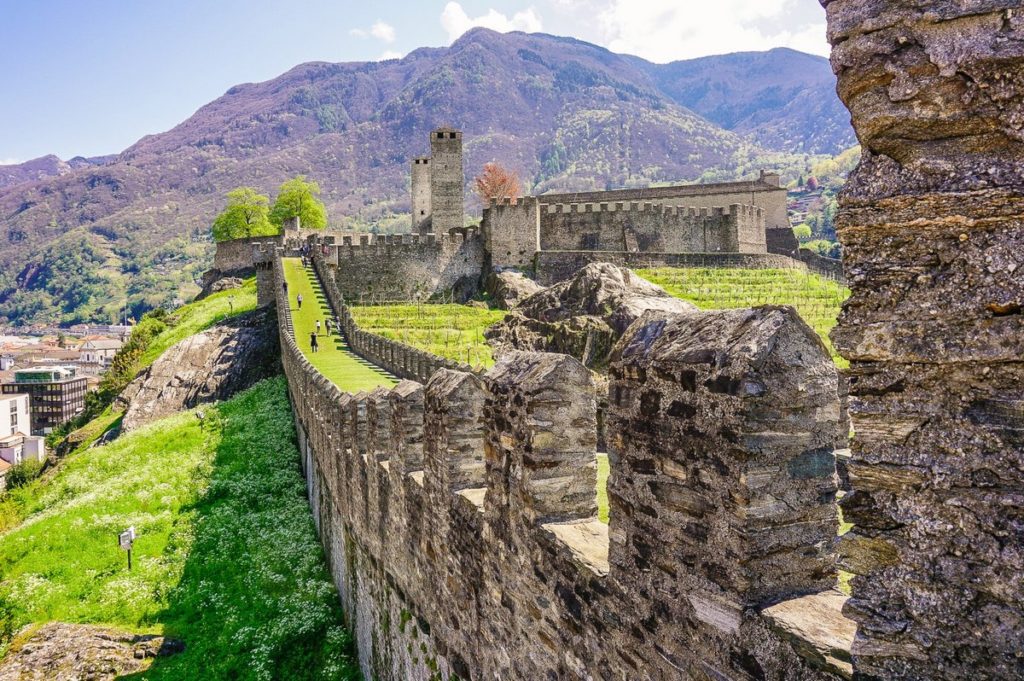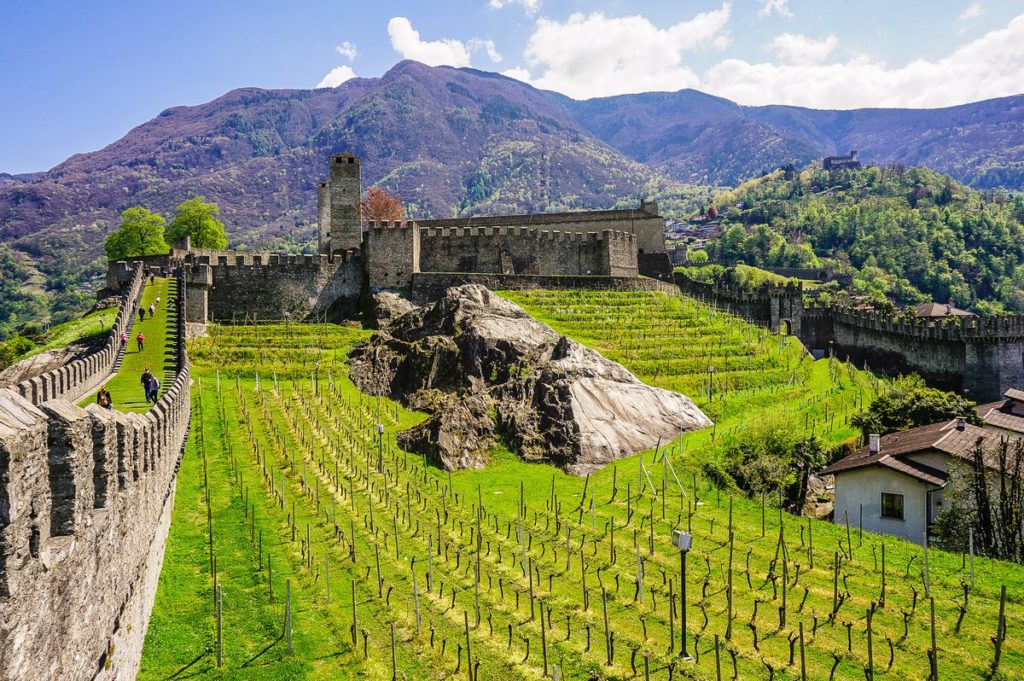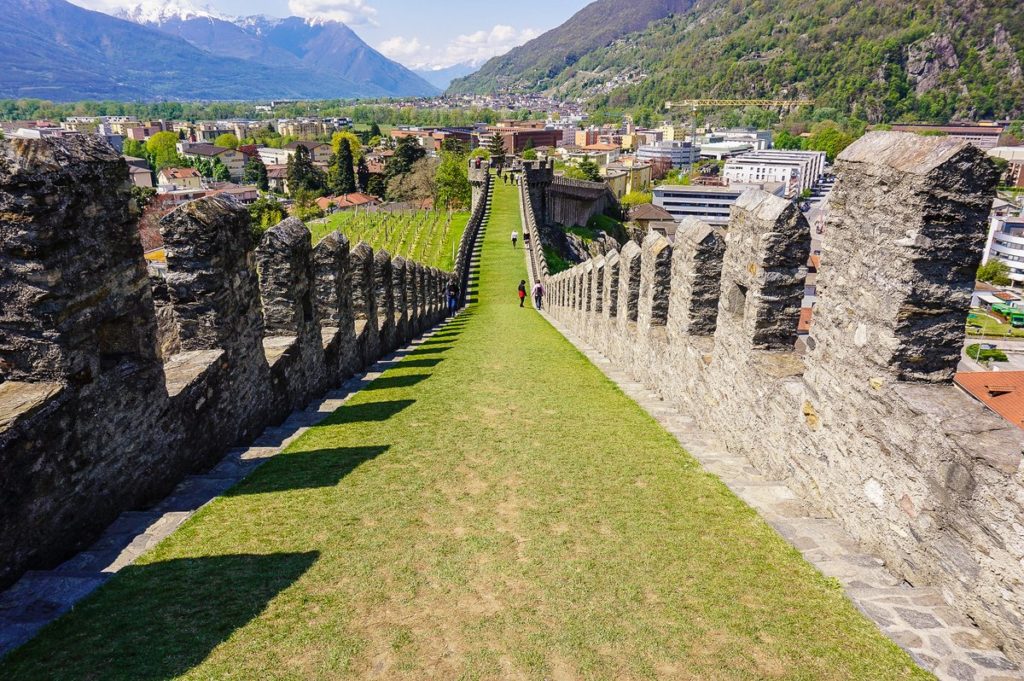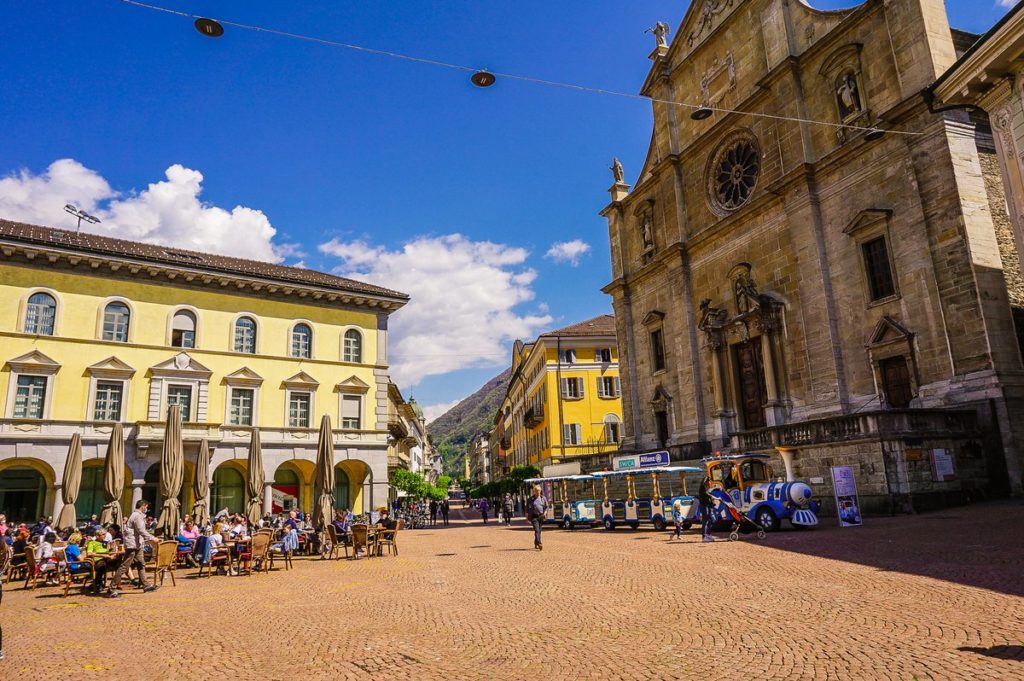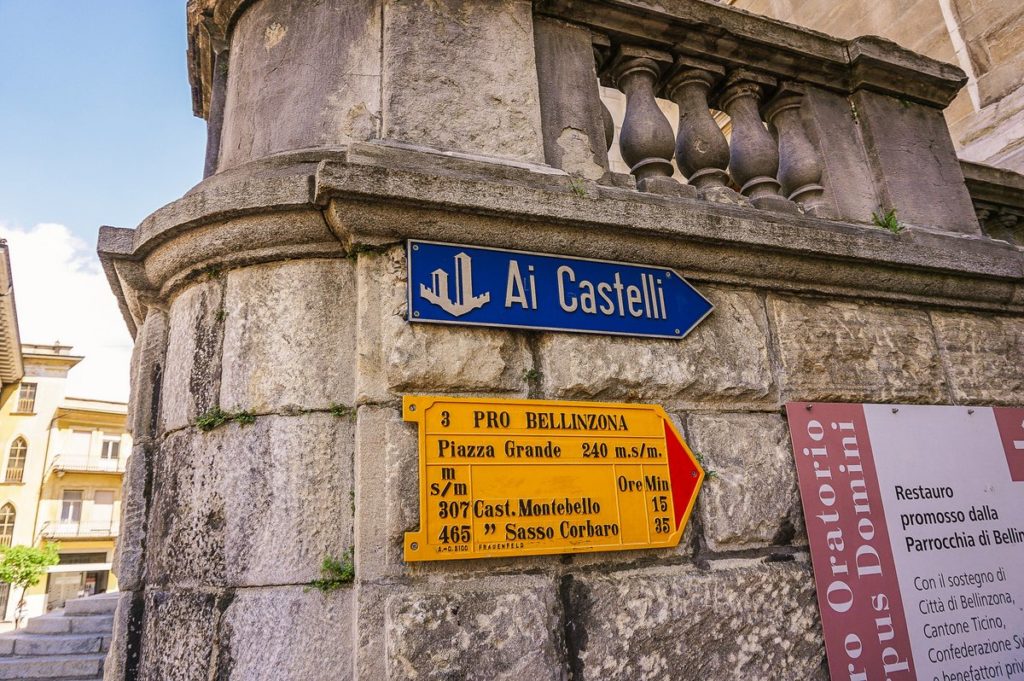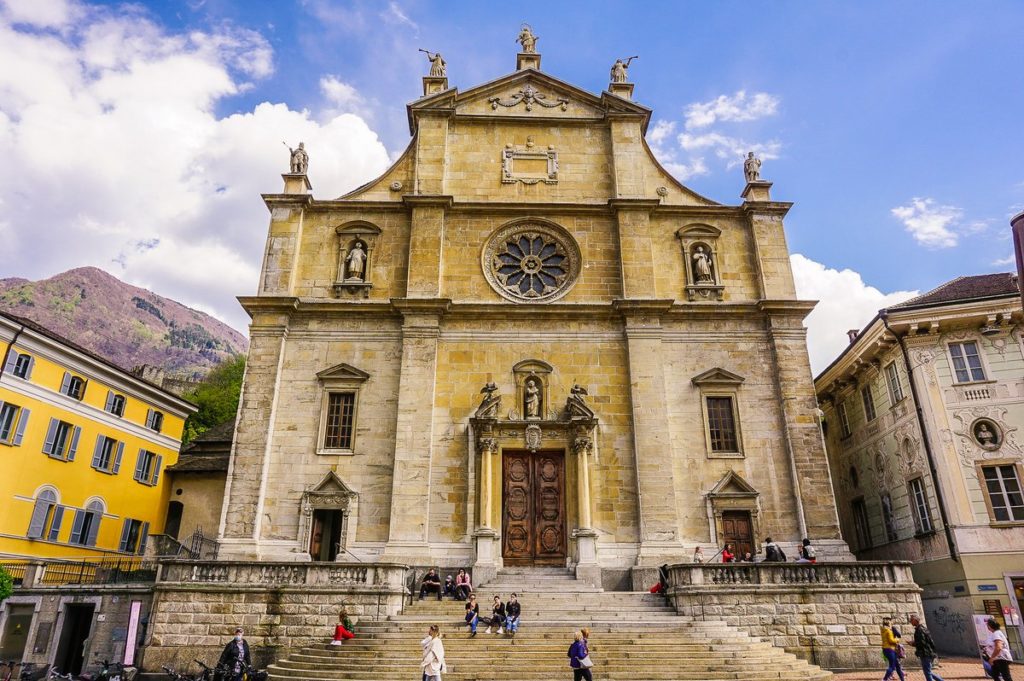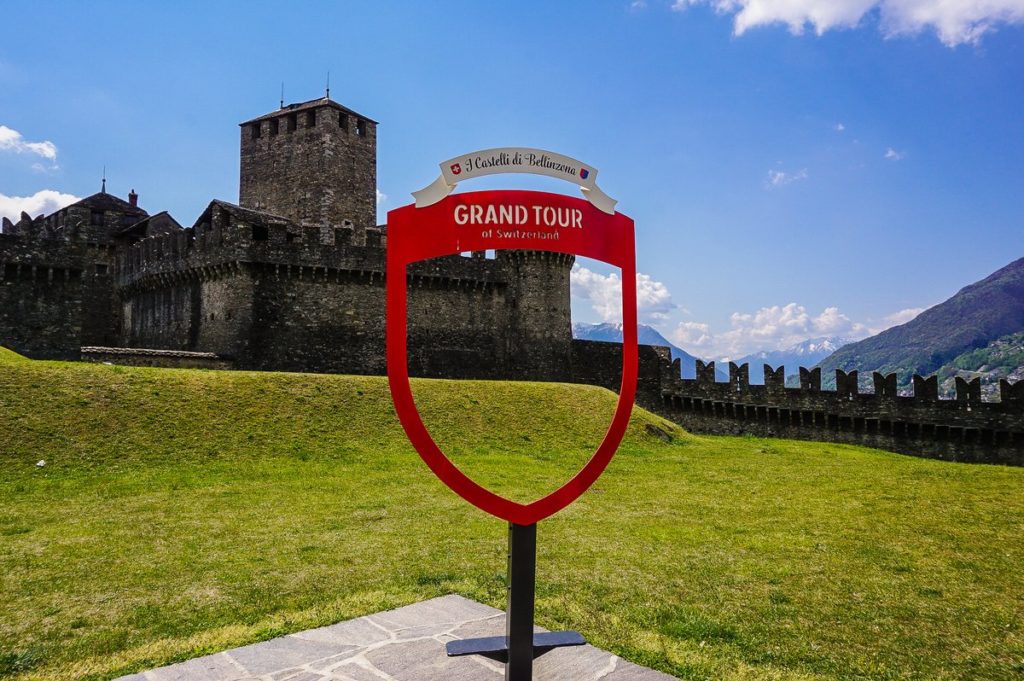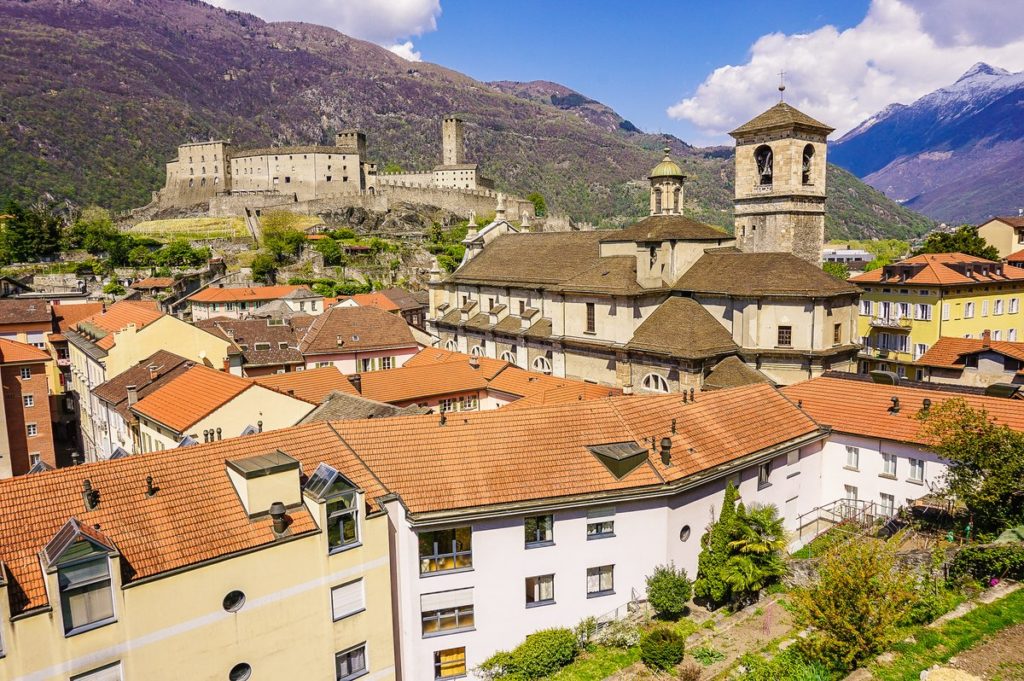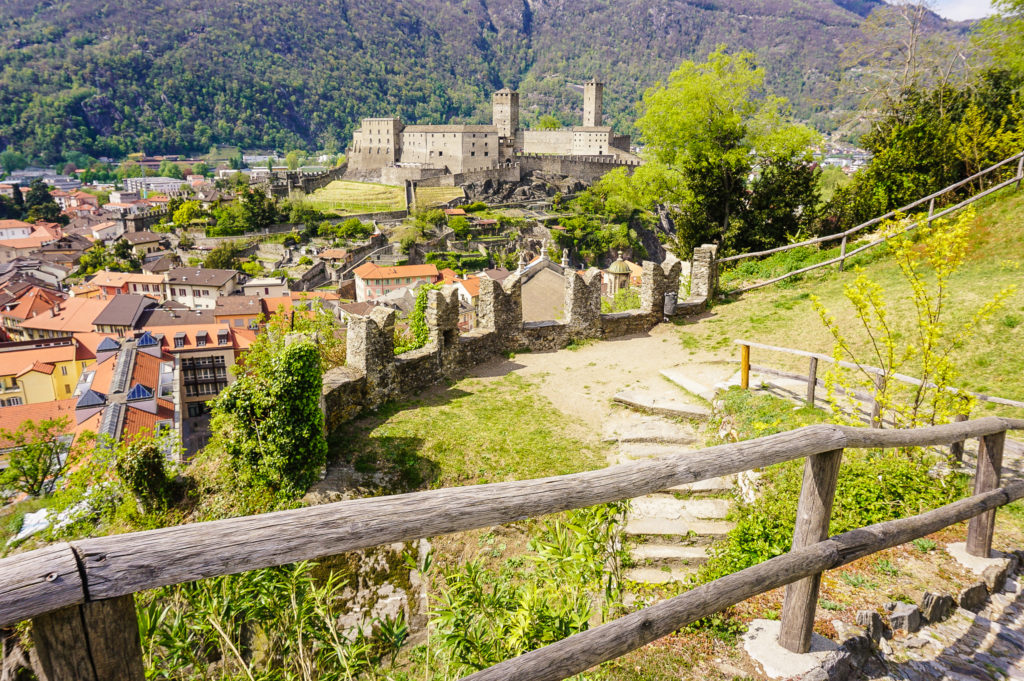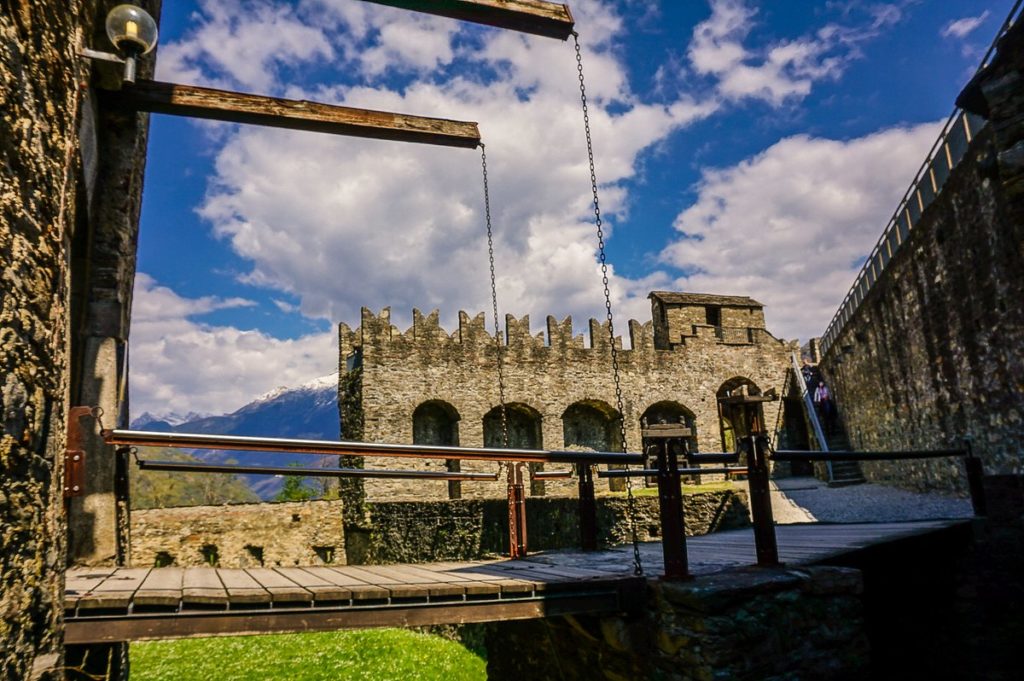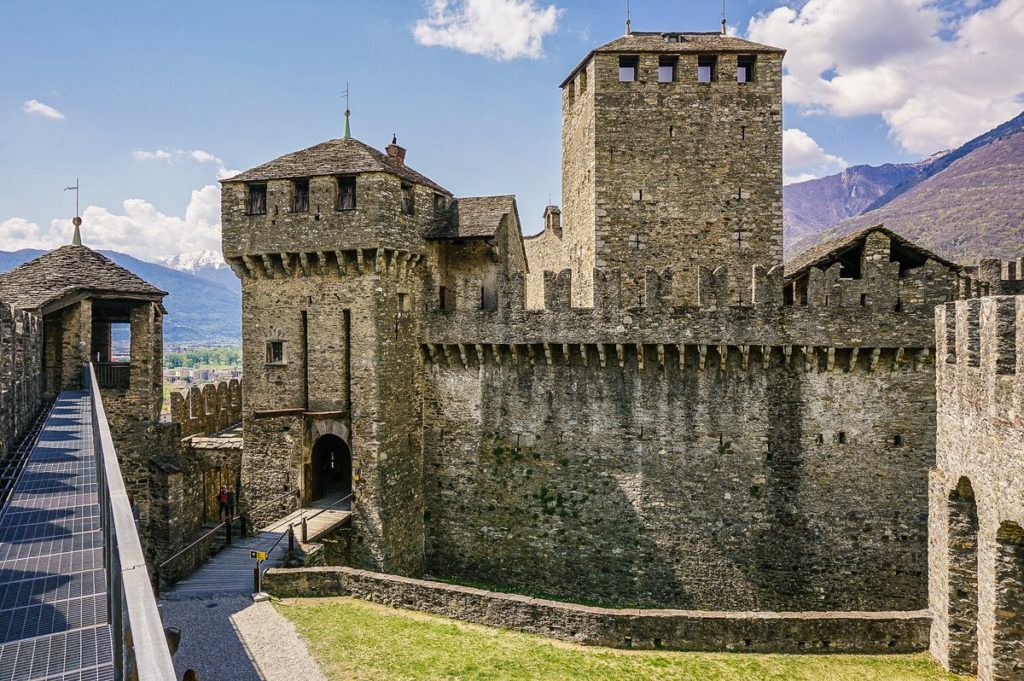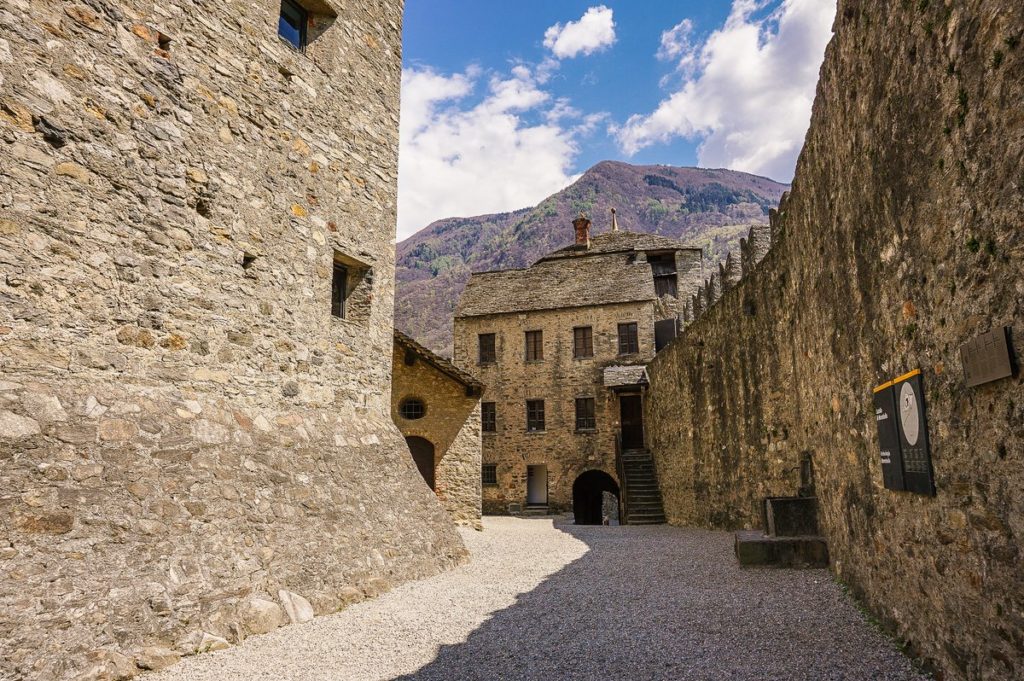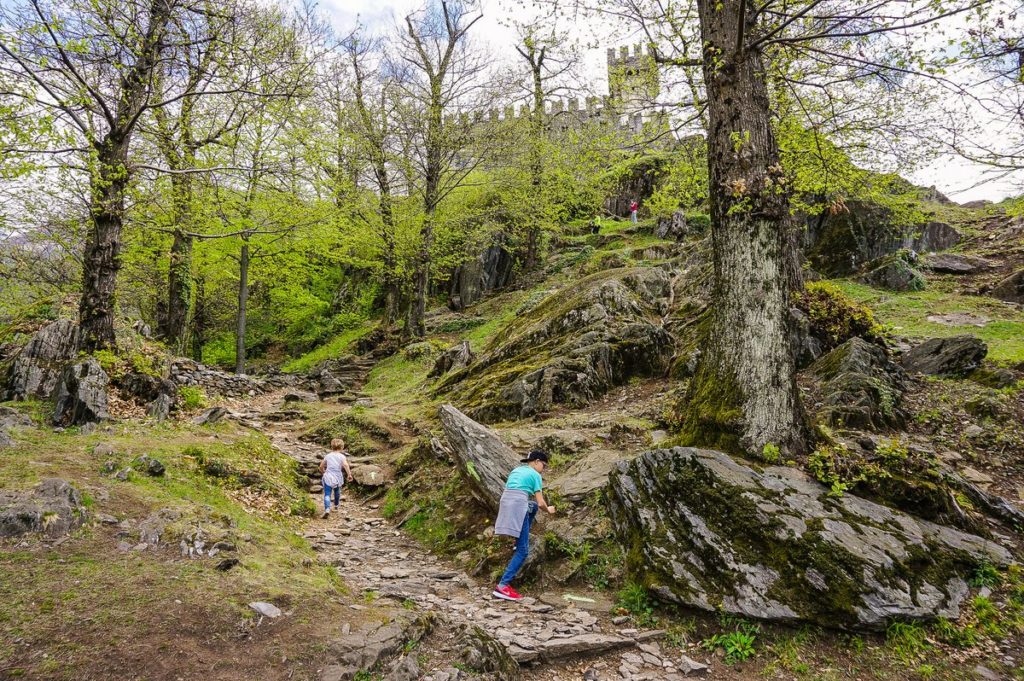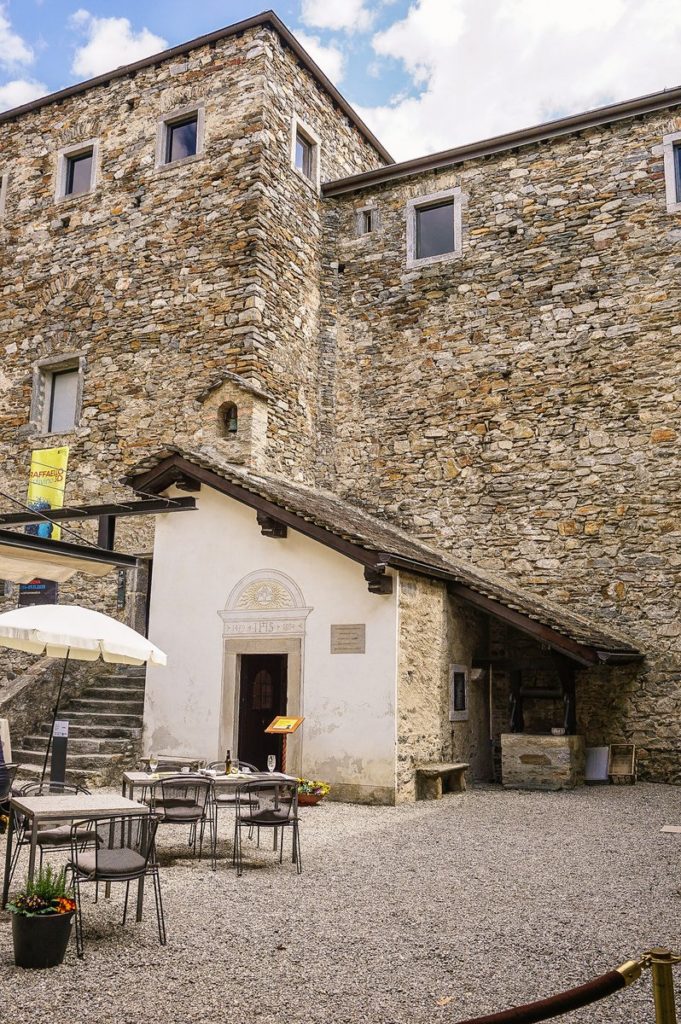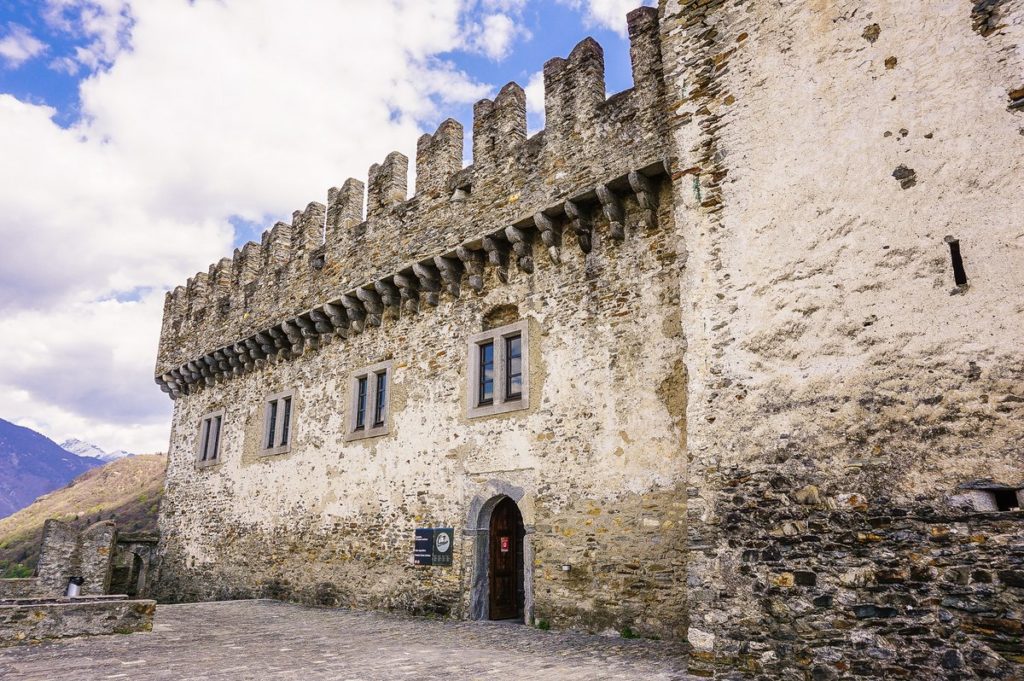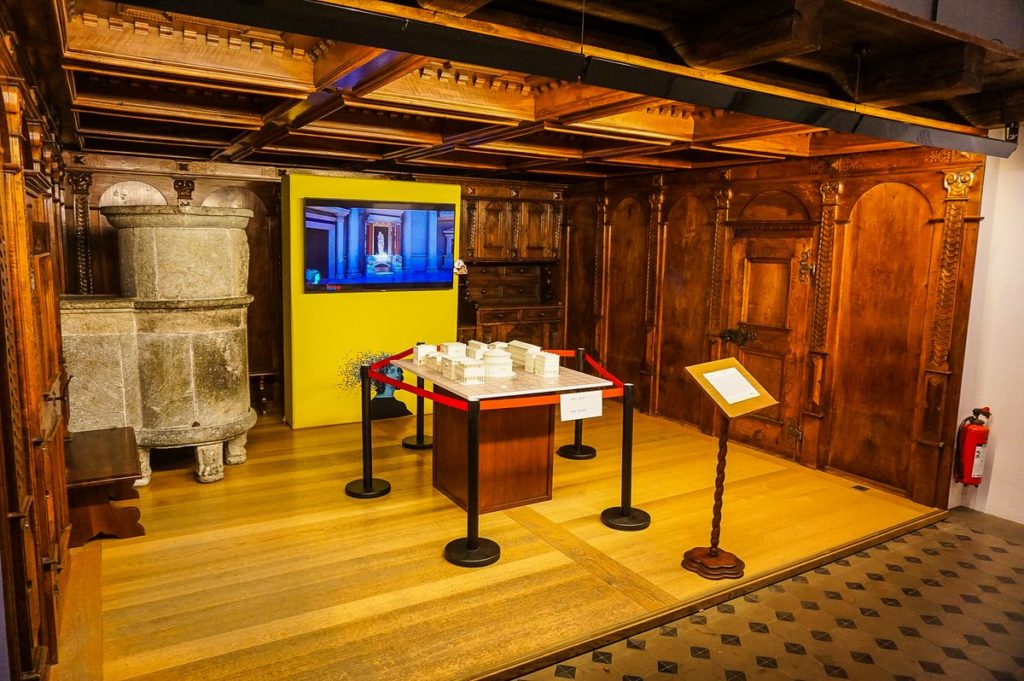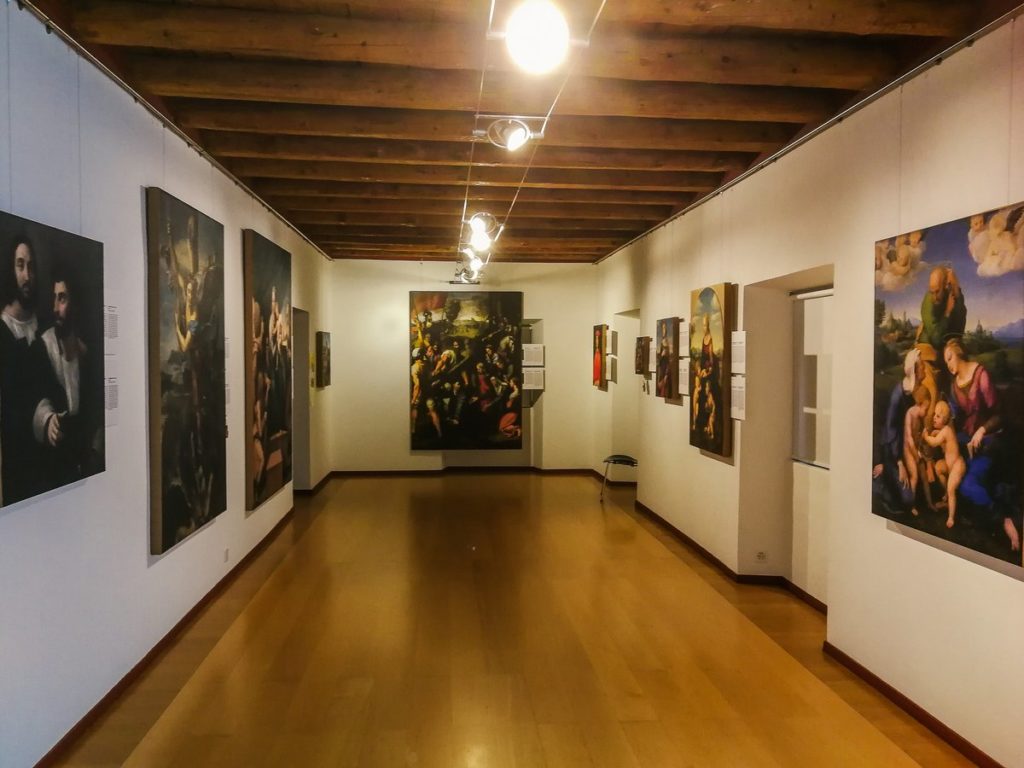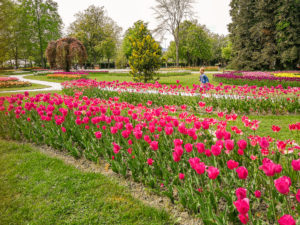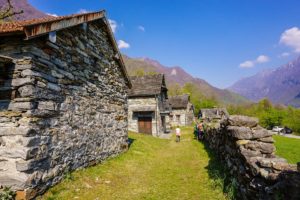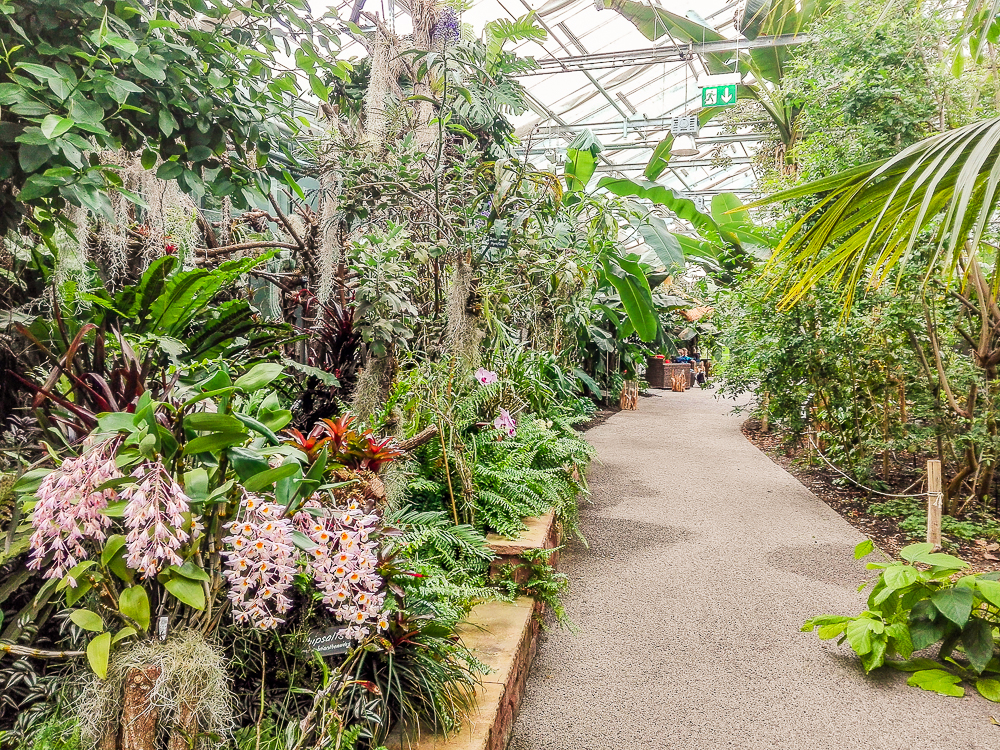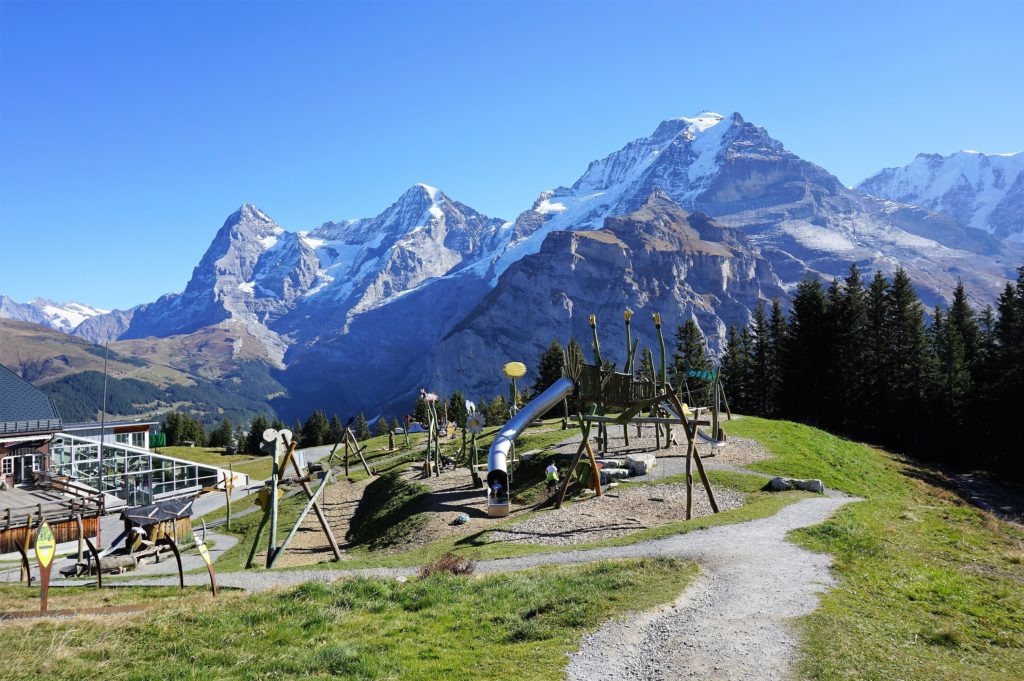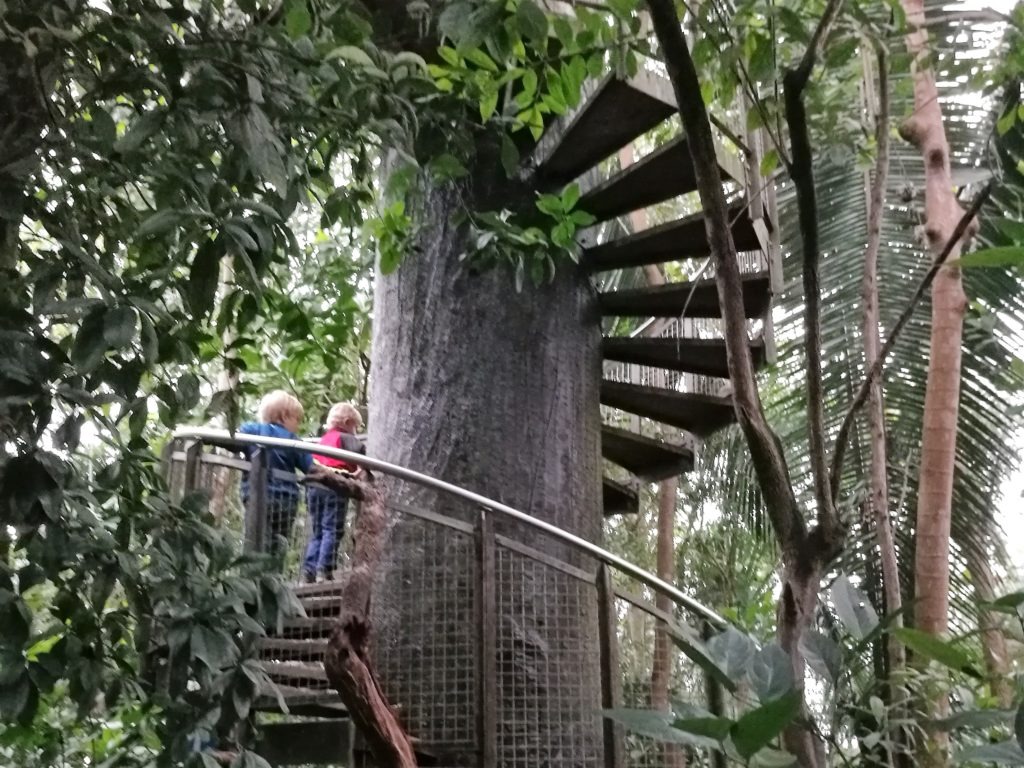We drove by so many times but never had time to stop here. We just sped down the highway and I sighed, “well, maybe next time”, and kept driving. But this time, during our short vacation in Ticino, I insisted that we finally put a visit to Bellinzona on our itinerary. And why did I insist on visiting Bellinzona in the first place? Because it is the capital of the canton of Ticino (not many people know that) and is a UNESCO World Heritage Site thanks to its three medieval castles.
How to get there
By train: thanks to the opening of the Gotthard Foot Tunnel ( the longest and deepest tunnel in the world at 57 kilometers), the train journey to Bellinzona has been considerably shortened. From Zurich, for example, the direct journey (IC 2 train) takes 1 hour 37 minutes. The train station is about 500 meters northeast of Old Town.
By car: if you drive to Bellinzona, the two most common access routes from German-speaking parts of Switzerland are via the Gotthard Tunnel (from the direction of Bern/Lucerne/Zurich) or San Bernardino (from the direction of Chur/St.Gallen). There are several paid car parks right in the center, such as the Autosilo Piazza del Sole, which is perfectly located for exploring the city.
Bellinzona
Already in Roman times, Bellinzona was a fortress with a strategic location that controlled the Alpine passes (Novea, Lucomagno, Gottardo and San Bernardino). In the middle of the 13th century, the Visconti family of Milan bought the town and built a new castle on a hill in the middle of the valley on the site of the original Roman frontier post. The Rusconi family of Como built the second castle and the Sforza family built the third.
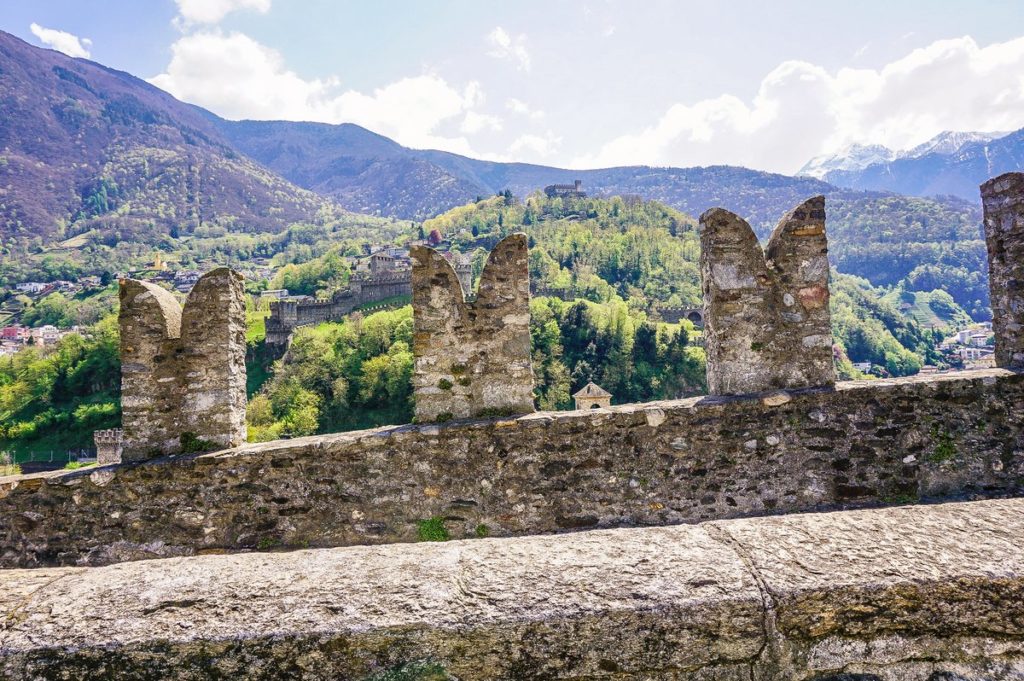
Castelgrande
Castelgrande is the most visible landmark of Bellinzona and perhaps the most impressive of the trio of medieval fortresses. The site – that is, the San Michele hill on which the castle stands today – was inhabited as early as Neolithic times (5500-5000 BC). You can get here from the Piazza del Sole, in the western corner of which you will find a lift built in the rock that will take you up to the upper terrace of the castle fortifications. Entrance to the castle grounds (courtyard and Murata) is free. Otherwise, there is a charge of 10 francs to visit the tower and 5 francs to visit the Museo Archeologico. As for the towers, they are the dominant feature of the castle – there are two and they are called the White and Black (Torre Bianca and Torre Nera), although both are built of grey granite.
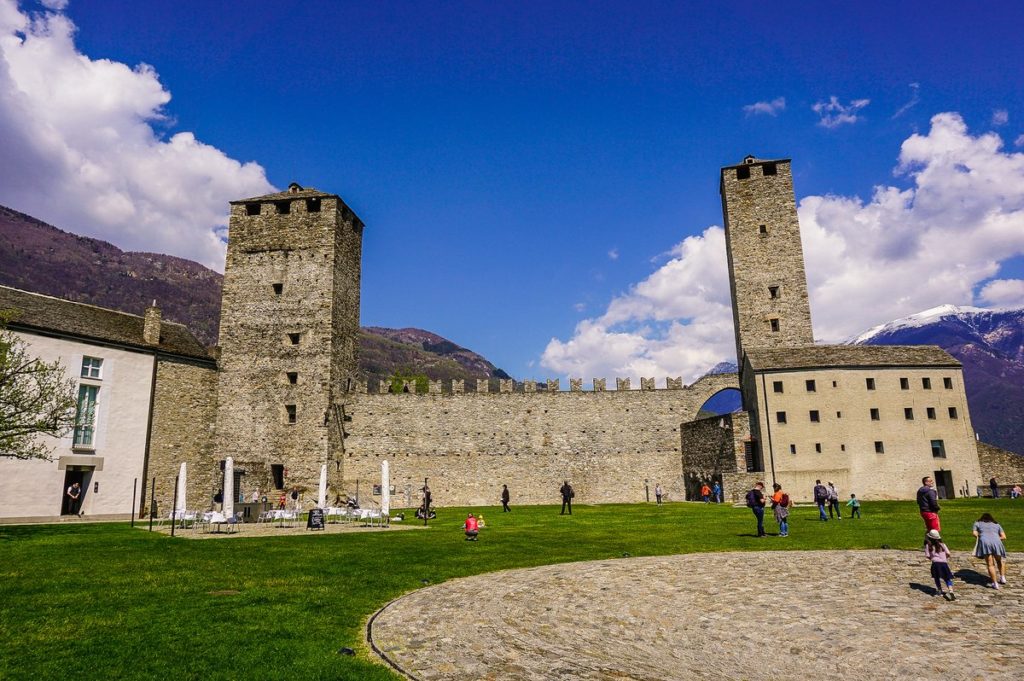
The most impressive element of the castle complex is the Murata, a massive double wall that hides an arched passageway.
If you want to go to the second castle, go down the stairs of Scalinata San Michele. These take you to the Piazza della Collegiata, dominated by the magnificent Chiesa Collegiata dei SS Pietro i Stefano. The exterior is Renaissance, but the interiors are Baroque. If you’re a fan of Baroque art or a religious person, I definitely recommend going inside. You’re not allowed to take pictures inside, so I don’t have any pictures of the interior for you, but it is absolutely stunning.
Castello di Montebello
An inconspicuous sign by the steps of the Chiesa Collegiata will guide you to the next castle. Yes, there are stairs again. If you don’t want to/can’t take the stairs, you can drive to the castle – there is free Montebello Parking. And there’s also a sign for the Grand Tour of Switzerland.
The 13th-century fortress is very impressive thanks to its drawbridges, ramparts and small museum (admission 5 francs). The view of the city from here is beautiful. I also recommend the place for a picnic (which will definitely come in handy after climbing the stairs) – there are even picnic tables in the alcoves on the inside of the castle ramparts.
Castello di Sasso Corbaro
From Castello di Montebello, it is less than 2 km up to Castello di Sasso Corbaro. This smallest of the local castles was built in the 15th century by the Sforza family to reinforce two existing fortresses, thus completing the chain of fortifications of the town. It’s quite a steep climb, so if you get tired of hiking up to the Castello di Montebello, you can take a bus (line 4) to the Castello di Sasso Corbaro, or arrive directly below the castle by car or tourist shuttle train. In the square courtyard, you will find a small restaurant where your loved ones can wait for you while you decide to visit the gallery inside the castle with its changing exhibitions.
At the time of our visit the castle was hosting an exhibition Raffaello il divino 3D about the Renaissance artist Raffaello Santi (admission 15 francs adults, 8 francs children), which I visited. You can see it here until November 7.
Summary
- The center of Bellinzona is small and walkable. The climb to the castles, however, requires being in a good shape.
- I liked that each of the castles had large grassy areas where the kids could run and fool around and not have to worry about breaking anything. Although, I mean, for a while we were worried about them falling off the inner walkways of the ramparts because the stone walkways are narrow and there are no railings.
- The grounds of each castle can be visited with a stroller or wheelchair. However, inside castles and museums, there are lots of stairs and no lifts.




